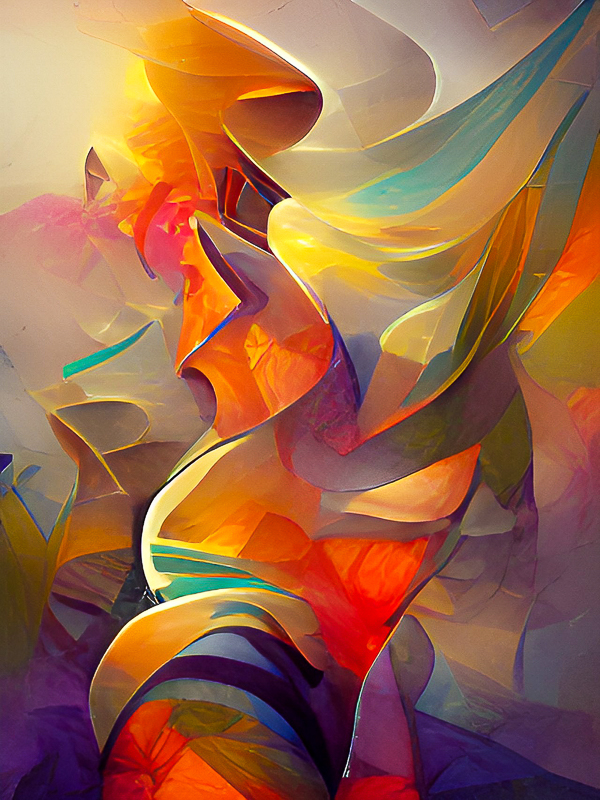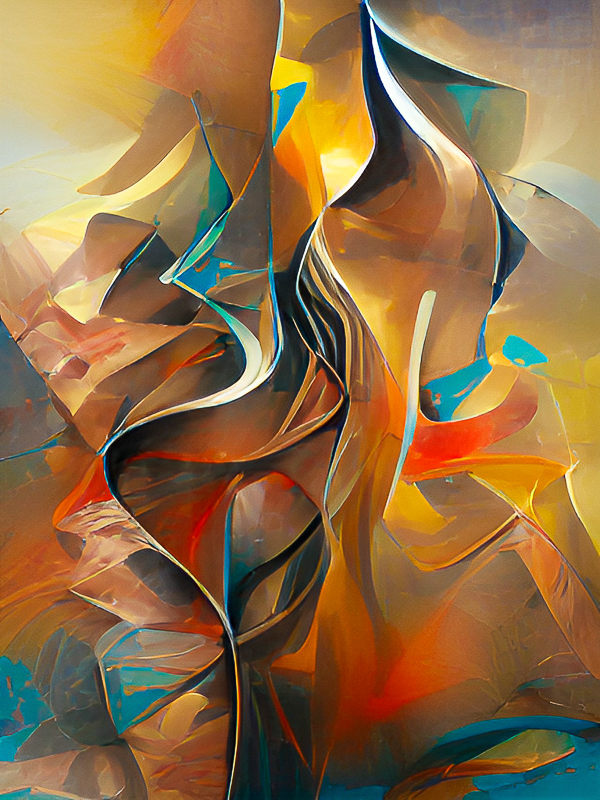Abstract Surrealism
What is Abstract Surrealism?
Abstract Surrealism, a captivating marriage of abstraction and surrealism, unfolds as a compelling exploration of non-representational forms infused with dreamlike elements. This distinctive hybrid, rooted in the abstract art tradition, introduces surrealist aesthetics into compositions that defy conventional interpretation.
- Non-Representational Expressiveness:
Abstract Surrealism inherits the abstract artist’s commitment to non-representational forms, where compositions transcend the confines of recognizable objects. In this dynamic fusion, the language of abstract art becomes a canvas for surreal narratives. - Surreal Imagery and the Subconscious Mind:
Embracing the dreamlike atmosphere of surrealism, Abstract Surrealism delves into the recesses of the subconscious mind. Artists draw inspiration from dreams, accessing the surreal realm to craft compositions that transcend the ordinary and invite viewers into a realm of symbolic abstraction. - Symbolic Abstractions and Archetypal Forms:
Abstract Surrealist works employ symbolic imagery and archetypal forms to evoke emotions and prompt imaginative interpretations. These symbols, often derived from the surrealist lexicon, enrich the abstract art narrative with layers of personal and collective meaning. - Emotive Color Palette in Abstract Surrealism:
The expressive use of color is a hallmark of Abstract Surrealism within the abstract art continuum. Artists leverage color to convey mood, intensity, and the psychological nuances associated with surreal narratives, amplifying the emotional resonance of their works. - Intuitive Mark-Making and Abstract Expression:
Abstract Surrealists embrace gestural and intuitive mark-making techniques, echoing the spontaneity and raw energy of abstract expressionism. This infusion of dynamic brushstrokes and expressive gestures heightens the emotional impact, resonating with the ethos of abstract art. - Spatial Ambiguity and Distortion:
Spatial ambiguity and distortion become powerful tools in Abstract Surrealism’s arsenal. Artists manipulate perspective, scale, and proportion within abstract compositions, creating enigmatic and disorienting environments that challenge the viewer’s perception. - Collage and Mixed-Media Experimentation:
Abstract Surrealists often venture into collage and mixed media, expanding the abstract art palette. This eclectic approach, resonant with surrealist traditions, introduces diverse materials, textures, and unexpected juxtapositions, enriching the tactile and visual dimensions of their creations.
Abstract Surrealism, enriched by these abstract art nuances, stands as a testament to the boundless possibilities when two influential movements converge. Within this captivating synthesis, artists navigate the realms of abstraction and surrealism, forging a visual language that transcends the tangible, inviting viewers to explore the intersection of imagination, emotion, and the enigmatic.
What is the difference between Abstract art and Surrealism?
Abstract art and Surrealism are two distinct art movements, each with its own characteristics, principles, and objectives. Here are the key differences between abstract art and Surrealism:
- Representation vs. Non-Representation:
– Abstract Art: The primary characteristic of abstract art is the absence of recognizable subject matter. Abstract artists focus on the use of form, color, line, and texture to create compositions that do not represent objects or scenes from the visible world. The emphasis is on non-representational elements and the purity of visual elements divorced from specific referents.
– Surrealism: Surrealism, on the other hand, often includes recognizable subject matter but in a distorted, dreamlike, or fantastical manner. While it may incorporate elements of abstraction, Surrealism frequently retains ties to the figurative and recognizable, creating imaginative and subconscious scenarios. - Imagination and the Subconscious:
– Abstract Art: Abstract art typically does not delve into narrative or storytelling. The emphasis is on the intrinsic qualities of visual elements, allowing viewers to engage with the artwork on a more subjective, aesthetic level. The artist’s expression may be intuitive, but it is not necessarily tied to narrative or symbolic content.
– Surrealism: Surrealism places a strong emphasis on the imagination and the subconscious. Surrealist artworks often draw inspiration from dreams, free association, and the irrational aspects of the human mind. Symbolic and dreamlike elements are central to Surrealist narratives, encouraging viewers to interpret the work through a psychological lens. - Emotional Resonance:
– Abstract Art: Emotions in abstract art are conveyed through the use of color, form, and composition. Viewers may derive emotional responses from the aesthetic experience without a clear narrative or representational content guiding those emotions.
– Surrealism: Surrealism intentionally elicits emotional responses by tapping into the subconscious and exploring psychological themes. The emotional impact often stems from the juxtaposition of familiar and unfamiliar elements within fantastical or dreamlike settings. - Techniques and Styles:
– Abstract Art: Abstract art encompasses a wide range of styles, including geometric abstraction, gestural abstraction, color field painting, and more. The techniques and styles employed in abstract art are diverse and can vary significantly among artists.
– Surrealism: Surrealist techniques include automatism (spontaneous, unpremeditated creation), juxtaposition of unrelated elements, and the use of dreamlike or hallucinatory imagery. Surrealist artists may incorporate detailed rendering, distortion, and symbolic elements in their works. - Historical Context:
– Abstract Art: The abstract art movement gained momentum in the early 20th century, with pioneers like Wassily Kandinsky and Kazimir Malevich paving the way. It continued to evolve through movements such as Abstract Expressionism, Minimalism, and beyond.
– Surrealism: Surrealism emerged in the 1920s and reached its height in the 1930s and 1940s. Influential Surrealist artists include Salvador Dalí, René Magritte, and Max Ernst. Surrealism had a profound impact on literature, film, and philosophy, extending beyond the visual arts.
While both abstract art and Surrealism contribute to the rich tapestry of art history, their distinctions lie in their approach to representation, narrative, and the underlying philosophies that guide artistic expression.



